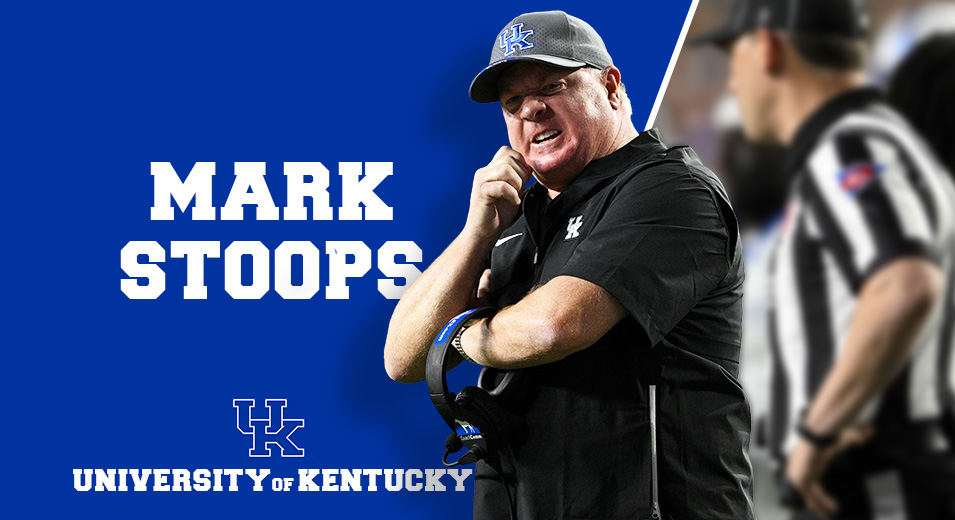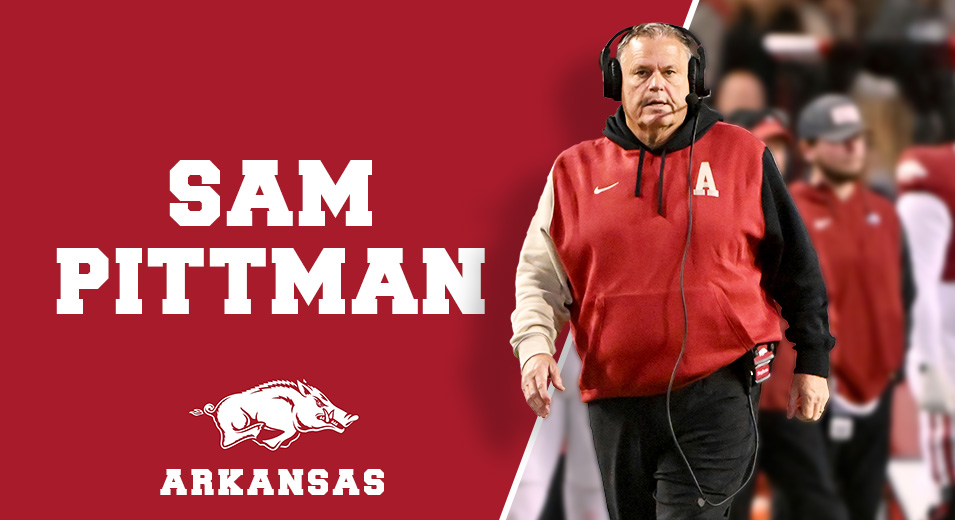Blog Article
Kentucky Football 2025: Mark Stoops’ Last Stand
What happens when a coach with a $37.5 million buyout lands on one of college football’s hottest seats?
After a disastrous 4-8 season that snapped Kentucky’s eight-year bowl streak, the longest-tenured coach in the SEC finds himself on the hot seat. The Wildcats managed just one SEC victory in 2024. They averaged a league-worst 308.5 yards per game offensively. They finished with the program’s worst record since Stoops’ inaugural season in 2013.
The pressure couldn’t be more explicit.
As one anonymous SEC coach told Athlon Sports, “This is a make-or-break year for the future of this program. He’s got a very friendly contract that makes him hard to fire, but right now, it’s hard to look at the overall roster here and think they’re keeping pace with programs like Vanderbilt and South Carolina, who changed with the times.”
Another losing season would almost certainly end Stoops’ tenure, regardless of his contract extension, which runs through 2031, with a buyout approaching $37.5 million.
The Quarterback Gamble That Changes Everything
Everything about Kentucky’s 2025 season hinges on one player.
Zach Calzada arrives from Incarnate Word as Kentucky’s most experienced option after completing 65% of his passes for 3,791 yards, 35 touchdowns, and just nine interceptions in 2024. His journey back to the SEC represents both promise and risk for a program desperate for stability at the position.
Here’s what makes Calzada intriguing:
- SEC pedigree from his memorable 2021 performance at Texas A&M
- Threw for 285 yards and three touchdowns in a stunning 41-38 upset of top-ranked Alabama
- Earned SEC Offensive Player of the Week honors for that performance
- Brings leadership and mobility to an offense that ranked 119th nationally in scoring
“He’s battle-tested,” offensive coordinator Bush Hamdan said of Calzada. “He’s experienced the highs and the lows. This league is hard, but so is Zach.”
The 24-year-old quarterback’s ability to extend plays and avoid sacks could prove crucial behind an offensive line that allowed 2.1 sacks per game in 2024.
Complete Roster Reconstruction Through the Portal
Kentucky’s offseason approach bordered on desperation.
The Wildcats brought in 26 transfer portal additions while losing 29 players, fundamentally reshaping a roster that managed just 20.6 points per game in 2024. Only 40 players from last year’s team return. That’s a retention rate of just 47 percent.
The most dramatic changes occurred at these positions:
- Wide receiver: Added five scholarship transfers and five high school signees while retaining only three players from 2024
- Offensive line: Brought in Alex Wollschlaeger (Bowling Green), Cameron Jones (James Madison), and Shiyazh Pete (New Mexico State)
- Defense: Added David Gusta (Washington State), Mi’Quise Humphrey-Grace (South Dakota), and Lorenzo Cowan (USC)
Key receiver additions include:
- Kendrick Law from Alabama
- Tory Stellato from Clemson
- Ashton Cozart from SMU/Oregon
“We set that precedent right from the beginning,” Stoops said about integrating the new additions. “We always want to be player-led and player-led in the accountability phase, and these guys are working at it.”
The Schedule From Hell Awaits
Want to know why Vegas has Kentucky’s win total at just 4.5 games?
The Wildcats face one of the most challenging schedules in college football. They’ll host Ole Miss, Texas, Tennessee, and Florida at Kroger Field. All four opponents will likely be ranked. Road games await at South Carolina, Georgia, Auburn, Vanderbilt, and rival Louisville.
According to Sports Illustrated’s analysis: “Realistically, all nine of these teams could be ranked this season, making this one of the toughest schedules Coach Stoops will have played during his time in Lexington.”
The numbers tell the story:
- Vegas win total: 4.5 games at FanDuel, 5.5 at DraftKings
- Early spread projections show Kentucky favored in only four games
- Non-conference games against Toledo, Eastern Michigan, and Tennessee Tech provide the only realistic early victories
The SEC gauntlet begins immediately after.

Cultural Reset and Leadership Challenges
How do you build team chemistry when 31 new players walk through the door?
Stoops launched the “Yearbook” program to help players learn each other’s names and conducted home visits to foster personal bonds. This cultural emphasis represents a direct response to the challenge of integrating so many new faces while maintaining standards.
“I love this place. I’ve been here 12 years, going on 13, and I promise you — I’ll be honest with you, I’m emotional right now talking about it because my ass wants to get back to the office and get to work to make this team better,” Stoops told KSR in March.
The emotional weight of the situation is obvious.
The coaching staff remains largely intact, providing continuity during turbulent times:
- Kevin Barbay joined as an offensive analyst to assist Hamdan
- Brad Lambert was hired to work with the secondary
- Focus on accountability and player-led leadership continues
Special Teams Excellence Remains
Kentucky’s special teams unit represents one of the few bright spots.
Punter Aidan Laros returns after earning All-SEC second-team honors. Kicker Alex Raynor brings back elite accuracy following a 93.8 percent field goal and 96.3 percent extra point conversion rate in 2024. These specialists provide the “hidden yardage” advantages that could prove decisive in close games.
The return game lost Barion Brown’s explosive ability, but the Wildcats have prioritized special teams as a way to create scoring opportunities when the offense stalls.
The Buyout Factor Creates an Unusual Dynamic
Stoops’ massive contract extension creates a complex situation.
The $37.5 million buyout makes firing him financially burdensome for Kentucky, providing some insulation despite fan frustration following back-to-back losing seasons. However, the pressure from fans and administration continues to mount.
Here’s what the numbers show:
- Season ticket sales dropped 12.7 percent
- Only a few hundred fans attended the spring game
- Clear disconnect between fanbase and program leadership
This tension between fiscal reality and performance expectations creates an unusual situation where Stoops has job security despite on-field failures.
What Success Actually Looks Like in 2025
Bowl eligibility represents the absolute minimum requirement.
Most analysts project that Kentucky will finish with four to five wins. Six victories would require significant improvement and several upsets. The best-case scenario involves Calzada playing efficiently, the offensive line gelling quickly, and at least one transfer receiver emerging as a playmaker.
As Sports Illustrated observed: “If Stoops gets this team to a bowl game, it will be the best job he has done in a season during his time at Kentucky.”
The keys to exceeding expectations:
- Reduce turnovers from 1.9 per game average in 2024
- Improve red zone efficiency from 43 percent touchdown rate
- Generate consistent defensive pressure after losing key pass rushers
- Win close games through special teams excellence
The Bottom Line: Prove It or Lose It
Kentucky football stands at a crossroads.
Stoops has spent 12 seasons building the Wildcats from SEC doormat to occasional contender, achieving unprecedented consistency with eight consecutive bowl appearances from 2016-2023. Recent regression has erased much of that goodwill and placed his future in jeopardy.
The 2025 season will determine whether Kentucky’s recent success was sustainable progress or merely a brief peak that will return to historical norms.
For Mark Stoops, 2025 isn’t just another season in Lexington—it’s his final audition.
The Next Billion Dollar Game
College football isn’t just a sport anymore—it’s a high-stakes market where information asymmetry separates winners from losers. While the average fan sees only what happens between the sidelines, real insiders trade on the hidden dynamics reshaping programs from the inside out.
Our team has embedded with the power brokers who run this game. From the coaching carousel to NIL deals to transfer portal strategies, we’ve mapped the entire ecosystem with the kind of obsessive detail that would make a hedge fund analyst blush.
Why subscribe? Because in markets this inefficient, information creates alpha. Our subscribers knew which coaches were dead men walking months before the mainstream media caught on. They understood which programs were quietly transforming their recruiting apparatuses while competitors slept.
The smart money is already positioning for 2025. Are you?
Click below—it’s free—and join the small group of people who understand the real value of college football’s new economy.

